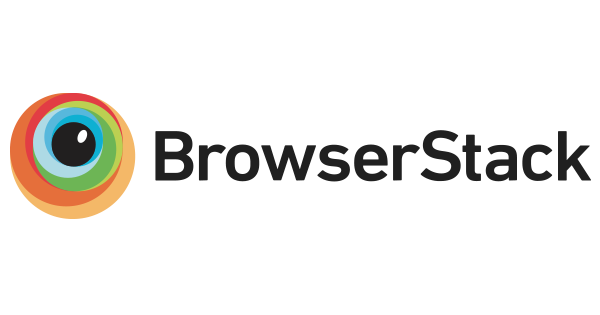OpenMotics User Interface
This project is the main user interface for the OpenMotics platform. It originated as the interface of the OpenMotics Gateway module, but over time, it evolved into a global UI that can run both on the OpenMotics Gateway module, and on the OpenMotics cloud infrastructure.
The idea is to get it even smarter in the future:
- Use Service Workers to get (some) offline functionality
- Switch to either the local Gateway's API, or the Cloud's API based on the location of the user
- Access data from the Cloud infrastructure in the local context, and vice versa
- ...
Getting Started
These instructions will get you a copy of the project up and running on your local machine for development and testing purposes.
See deployment for notes on how to deploy the project on a live system. However, be aware that the code on the develop branch might require
certain API functionality not (yet) available on your own Gateway module.
Prerequisities
Make sure you have a recent version of nodejs and npm (npm should be at least version 5).
$ node --version
v8.3.0
$ npm --version
5.3.0
$
Installing
Check out this repo to some local folder. Let's call it openmotics-ui. The rest of the commands will assume this is the working directory.
First, start with installing the dependencies
$ npm install
...
added 1333 packages in 51.998s
$
Now, setup environment configuration. They are named like: env.{target}.{stage}.js. E.g. env.gateway.production.js or env.cloud.development.js.
They are all located under the project's root (next to e.g. package.json).
The stage is either development or production.
module.exports = {
settings: {
target: 'target', # The target at which the site should be build, either 'gateway' or 'cloud'. Defaults to 'gateway'.
api_root: 'api_root_uri', # Points to the API endpoint. Defaults to `location.origin`.
api_path: 'api_path', # Specifies the API path that needs to be appended to the above URI. Defaults to ''.
analytics: 'google_analytics_code' # Specifies the Google Analytics code. Defaults to ''.
has_config: true|false # Indicates whether a `/settings.json` file should be downloaded to extend these settings at runtime.
}
};
The development file (env.gateway.development.js) will most likely need some custom settings, e.g. the endpoint of the Gateway.
module.exports = {
settings: {
api: 'https://1.2.3.4',
has_config: false
}
};
The npm start script is either debug.{target}, or build.{target}.{stage}. When debugging, the stage is always development.
After configuratin files are set up, start the webpack development server
$ npm start debug.gateway
> [email protected] start /some/path/openmotics/gateway-ui
> nps
...
[2] (webpack)/buildin/global.js 509 bytes {0} [built]
[3] (webpack)/buildin/module.js 517 bytes {0} [built]
webpack: Compiled successfully.
And browse to http://localhost:8080
When making changes, webpack's development server will automatically repackage and reload the browser.
Deployment
For deploying to a Gateway, make sure to cleanup possible leftovers
$ rm -rf dist
$
Then generate a production bundle
$ npm start build.gateway.production
> [email protected] start /some/path/openmotics/gateway-ui
> nps "build"
nps is executing `build` : nps webpack.build
nps is executing `webpack.build` : nps webpack.build.production
...
fa2772327f55d8198301fdb8bcfc8158.woff 23.4 kB [emitted]
e18bbf611f2a2e43afc071aa2f4e1512.ttf 45.4 kB [emitted]
89889688147bd7575d6327160d64e760.svg 109 kB [emitted]
...
$
Then, ssh into your Gateway, and clean the web root (only the following snippet is executed on the Gateway)
$ cd /opt/openmotics/static/
$ rm -rf *
$
And scp the contents of the dist folder to the above folder
$ scp dist/* [email protected]:/opt/openmotics/static/
...
$
Running the unit tests
To run the tests make sure you first follow the instructions in Installing section.
You will also need Jest installed globally.
$ npm install -g [email protected]
$
Once you have everything you need, you can simply run:
$ npm run test
$
Jest will run every test and will report back on the console.
Example:
the toolbox
√ should return time in hours (36ms)
√ should remove an element from the array (26ms)
√ should check if array contains element (3ms)
√ should check if array contains element (3ms)
√ should convert seconds into hh:mm:ss format (2ms)
√ should return total minutes after giving hh:mm format (5ms)
...
$
Jest will attempt to run all test files respecting the format *.test.js
Git workflow
We use git-flow which implements Vincent Driessen's
branching model. This means our default branch is develop, and master contains production releases.
When working on this repository, we advice to use following git-flow config:
Branch name for production releases: master
Branch name for "next release" development: develop
Feature branch prefix: feature/
Bugfix branch prefix: bugfix/
Release branch prefix: release/
Hotfix branch prefix: hotfix/
Support branch prefix: support/
Version tag prefix: v
To set these configuration parameters:
git config gitflow.branch.master master
git config gitflow.branch.develop develop
git config gitflow.prefix.feature feature/
git config gitflow.prefix.bugfix bugfix/
git config gitflow.prefix.release release/
git config gitflow.prefix.hotfix hotfix/
git config gitflow.prefix.support support/
git config gitflow.prefix.versiontag v
Built With
- Aurelia - An awesome and modern web framework
- Webpack - Javascript bundling
- BrowserStack - Browser testing
Special thanks
BrowserStack - Live, Web-Based Browser Testing - Helping us testing the front-end on all modern browsers and devices.
Versioning
We use SemVer for versioning. For the versions available, see the tags on this repository
Authors
- Kenneth Henderick - GitHub user: khenderick
License
This project is licensed under the AGPLv3 License - see the LICENSE.md file for details
Acknowledgments
- Thanks to everybody testing this code and providing feedback.

